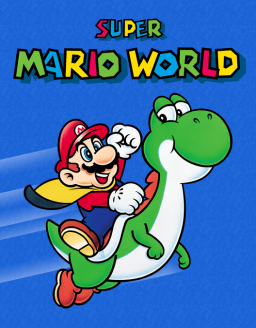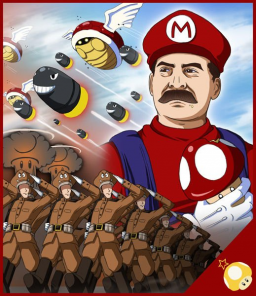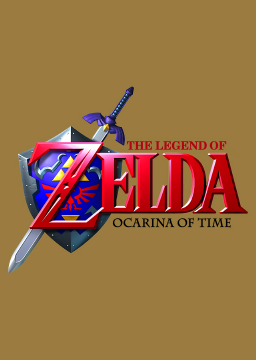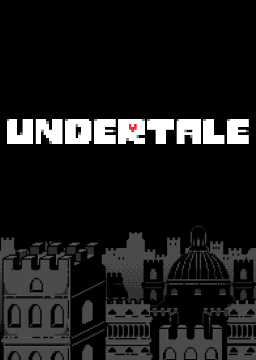Undertale From Wikipedia, the free encyclopedia Jump to navigationJump to search Undertale The logo shows the text "UNDERTALE" in white pixel-art text, with a red heart making up the counter in the "R". Developer(s) Toby Fox[a] Publisher(s) Toby Fox[b] 8-4[c] Designer(s) Toby Fox Artist(s) Temmie Chang Composer(s) Toby Fox Engine GameMaker Studio Platform(s) Microsoft Windows OS X Linux PlayStation 4 PlayStation Vita Nintendo Switch Xbox One Release September 15, 2015 Genre(s) Role-playing Mode(s) Single-player Undertale is a 2D role-playing video game created by indie developer Toby Fox. The player controls a child who has fallen into the Underground: a large, secluded region under the surface of the Earth, separated by a magical barrier. The player meets various monsters during the journey back to the surface, although some monsters might engage the player in a fight. The combat system involves the player navigating through mini-bullet hell attacks by the opponent. They can opt to pacify or subdue monsters in order to spare them instead of killing them. These choices affect the game, with the dialogue, characters, and story changing based on outcomes.
Outside of some artwork, Fox developed the entirety of the game by himself, including the script and music. The game took inspiration from several sources, including the Brandish, Mario & Luigi, and Mother role-playing series, bullet hell shooter series Touhou Project, role-playing game Moon: Remix RPG Adventure, and British comedy show Mr. Bean. Originally, Undertale was meant to be two hours in length and was set to be released in mid-2014. However, development was delayed over the next three years.
The game was released for Microsoft Windows and OS X in September 2015. It was also ported to Linux in July 2016, PlayStation 4 and PlayStation Vita in August 2017, the Nintendo Switch in September 2018, and Xbox One in March 2021. The game was acclaimed for its thematic material, intuitive combat system, musical score, originality, story, dialogue, and characters. The game sold over one million copies and was nominated for multiple accolades and awards. Several gaming publications and conventions listed Undertale as game of the year. Two chapters of a related game, Deltarune, were released in 2018 and 2021.
Contents 1 Gameplay 2 Plot 3 Development 3.1 Game design 3.2 Writing 3.3 Music 4 Release 4.1 Deltarune 5 Reception 6 Cultural impact 6.1 Fandom 6.2 Accolades 7 See also 8 Notes 9 References 10 External links Gameplay Fighting Toriel in Undertale. Toriel attacks a red heart, controlled by the player, with fire magic. Undertale employs a bullet hell/turn-based combat system in which the player controls the heart, avoiding attacks from enemies in between fighting, acting, healing, or mercy. Undertale is a role-playing game that uses a top-down perspective.[3] In the game, the player controls a child and completes objectives in order to progress through the story.[4] Players explore an underground world filled with towns and caves, and are required to solve numerous puzzles on their journey.[4][5] The underground world is the home of monsters, many of whom challenge the player in combat;[5] players decide whether to kill, flee, or befriend them.[4][6] Choices made by the player radically affect the plot and general progression of the game, with the player's morality acting as the cornerstone for the game's development.
When players encounter enemies in either scripted events or random encounters, they enter a battle mode. During battles, players control a small heart which represents their soul, and must avoid attacks unleashed by the opposing monster similar to a bullet hell shooter.[4][5] As the game progresses, new elements are introduced, such as colored obstacles, and boss battles which change the way players control the heart.[7] Players may choose to attack the enemy, which involves timed button presses. Killing enemies will cause the player to earn EXP (in turn increasing their LOVE) and gold.[8] They can use the ACT option to check an enemy's attacking and defending attributes as well as perform various other actions, which vary depending on the enemy.[4] If the player uses the right actions to respond to the enemy, or attacks them until they have low HP (but still alive) they can choose to spare them and end the fight without killing them.[9] For some boss encounters to be completed peacefully, the player is required to survive until the character they are facing has finished their dialogue. The game features multiple story branches and endings depending on whether players choose to kill or spare their enemies; and as such, it is possible to clear the game without killing a single enemy.[10]
Monsters will talk to the player during the battle, and the game will tell the players what the monster's feelings and actions are.[11] Enemy attacks change based on how players interact with them: should players choose non-violent options, enemy attacks are easy, whereas they become difficult if players choose violent options.[5][11] The game relies on a number of metafictional elements in both its gameplay and story.[12] When players participate in a boss battle on a second playthrough, the dialogue will be altered depending on actions in previous playthroughs.[13]
Plot Undertale is set in the Underground, a realm where monsters were banished after war broke out with humans. The Underground is sealed from the surface by a magic barrier with a singular gap at Mount Ebott.[14] A human child falls into the Underground and encounters Flowey, a sentient flower who teaches the player the game's mechanics and encourages them to raise their "LV", or "LOVE", by gaining "EXP" through killing monsters.[d] When Flowey attempts to kill the human and reap their soul, the human is rescued by Toriel, a motherly goat-like monster, who teaches the human to solve puzzles and survive conflict in the Underground without killing. She intends to adopt the human, wanting to protect them from Asgore Dreemurr, the king of the Underground.
The human eventually leaves Toriel to search for Asgore's castle, which contains the barrier to the surface world. They encounter several monsters, such as the skeletons Sans and Papyrus, two brothers who act as sentries for the Snowdin forest; Undyne, the head of the royal guard; Alphys, the kingdom's royal scientist; and Mettaton, a robotic television host Alphys created. Most of them are fought, with the human choosing whether to kill them or to spare and even befriend the monster. During their travels, the human learns the cause of the war between humans and monsters. Asriel, the son of Asgore and Toriel, befriended the first child who fell into the Underground and was adopted by Asgore and Toriel. One day, the child died after eating poisonous flowers. When Asriel returned the body to the humans, they attacked and fatally wounded him, causing Asgore to declare war. Asgore now seeks to break the barrier, which requires him to collect seven human souls, of which he has six.
The game's ending depends on how the player handles encounters with monsters.[16][10][e] If the player is on their first playthrough without killing (or killed some but not all monsters) the human arrives at Asgore's castle and learns that a monster's soul is also needed to cross the barrier, forcing them to fight Asgore. Sans stops the human before their confrontation, revealing that the human's "LOVE" is an acronym for "level of violence" and "EXP" for "execution points." Sans judges the human based on their accumulated "LOVE" and "EXP". The human fights Asgore, but Flowey interrupts, killing Asgore and stealing the human souls. With the aid of the rebelling souls, the human defeats Flowey, falls unconscious, and awakens on the human side of the barrier; they receive a phone call from Sans, detailing the state of the Underground after the human's departure. This ending is known as the "Neutral" ending, and has many different epilogue phone calls depending on which monsters were killed and which ones spared.
If the player kills no monsters, they complete the so-called "Pacifist" route.[18][16] Flowey is revealed to be a reincarnation of Asriel, created by Alphys's experiments. Toriel intervenes before the fight with Asgore and is joined by the other monsters the human befriended. Flowey ambushes the group, re-taking all the human souls and the souls of all the monsters to take an older Asriel's form to fight the human. The human connects with their friends during the fight, eventually triumphing. Asriel reverts to his child form, destroys the barrier, and expresses remorse to the others before leaving. The human falls unconscious and is awoken to see their friends surrounding them, with the knowledge of the human's name: Frisk. The monsters reintegrate with the humans on the surface, while Frisk has the option of accepting Toriel as their adoptive mother.
A third ending ensues if the player kills all monsters known as the "No Mercy" or "Genocide" ending.[13][18] When Frisk reaches Asgore's castle, Sans attempts and fails to stop Frisk. Flowey kills Asgore in an attempt to gain mercy but is then killed by Frisk. Chara, the fallen child whose body Asriel tried to return, appears and destroys the
bepis bepis bepis bepis bepis bepis bepis bepis bepis bepis bepis bepis bepis bepis bepis bepis bepis bepis bepis bepis bepis bepis bepis bepis bepis bepis bepis bepis



